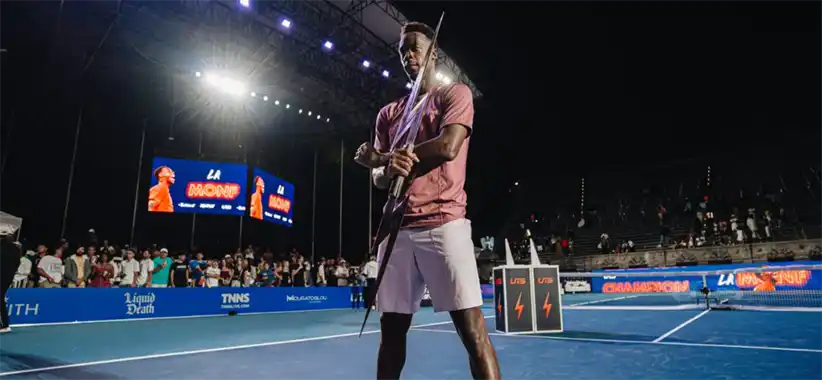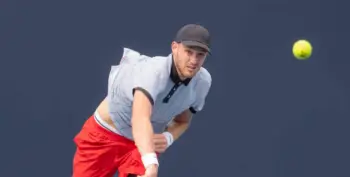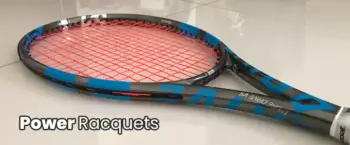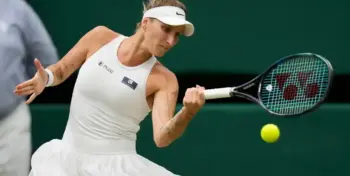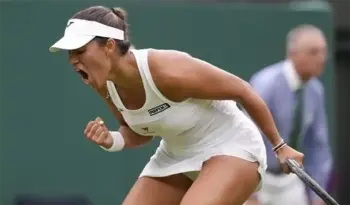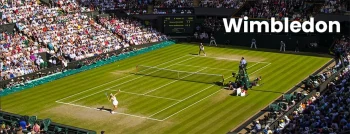These past weeks have been a couple of interesting ones with a break between the Asian hardcourt swing and the European indoor tournaments. The players used this break to either recover or add a bit more of playing time in different formats. This has not only sparked a debate whether it is a bit two-faced to complain about the number of tournaments and then play exhibitions, but also poses a question about the future of tennis. Will we always be left with the ATP classic format? Or will new tournaments add some variety?
Exhibitions as a form of income
The Six Kings Slam was not only a successful exhibition, but also set a new record for the biggest prize money ever won. Jannik Sinner left Saudi-Arabia with a whopping purse of 6 million dollars, all while stating that he doesn’t play for the money. As these tournaments cannot lure players with ranking points or similar benefits, prize money remains the one big chance. But this has the potential to change the way players plan their schedule or prioritize, as it poses a chance to really finance your season. Of course, only highly ranked players will get this kind of payment, but the established tournaments still have to compete with it.

I don’t think that something like a Masters or Grand Slam will ever be in competition with an exhibition, but if you’re a 500 in the same week as the Six Kings, chances are that the top-5 might not play your draw. This does not help with the general discussion, that lower ranked players have a hard time making a living but will rather concentrate money on top. So, it comes down to the ATP and other associations how to deal with this added money and the way it can help players. The money from the Arabian countries will surely not stop flowing into the sport.
UTS – including a different format
The Mouratoglou founded UTS tournament does not only include money for players, but also wants to change rules and conditions. Next to around 120k, that players can earn per match, it sports a set of changes that want to make tennis more spectacular and accessible for a new audience. This includes a timed quarter format with deciding points at the end of each one, where you need to win three quarters to win your match. Serves are reduced to one serve per point, and you have the opportunity to make points count times three. All this together with a non-silenced crowd makes the sport a bit more like an American version, which draws both positive and negative reviews.
The group format also guarantees three matches per player and a steady income, as the prize money is split 70/30 between the winner and loser of each match. This makes the tournament also very attractive, even if it cannot sport the same list of players as the Six Kings Slam. The list of players at their recent event in Frankfurt was a mixture of well-known spectacular players and young guns, who wanted to take the chance.
In total, the format helps players who do play smart tactically and do either not rely on their serve completely or are confident with their percentage. Ben Shelton won this event in Frankfurt, where he was one of the best motivated easily. Some players like Monfils seemed to rather play for fun, while others like Shelton, Musetti or Humbert took things way more seriously. For the UTS to have the success they want, they would need players to consistently play all events and give their all, which will be hard to achieve.
Long-term success and changes?
The long-term success of these format will stand and fall with the players they can attract. Tennis fans will come for their favorites, regardless of the tournament they played in. I was in Frankfurt, and you could hear a lot of complaints that crowd favorites like Nick Kyrgios had been pulled from the draw on short notice. And to attract these players without ranking points, you need money and an attractive spot in the calendar where players don’t miss important tournaments. As long as the ATP and WTA run tight ships with their calendars, it will be hard for other organizers sneak in. Maybe this is also why they keep on slamming the calendar full of events, to avoid the competition to gain ground.
Regarding the rules, I would say that the fans might be pretty divided. Some are traditionalists, who prefer the rules to keep the same, keeping the spirit of tennis. Others are open to changes, such as let rules or letting the crowd speak. The bigger changes of UTS, such as the quarter format or single serve will be unique for exhibitions only, as they are much harder to implement. But in either case, the changing process for tennis has started and will surely not stop. Are there any changes you are excited about? And what do you think of new formats?
